Joseph Hill “Joss” Whedon (/’hwi:d?n/; born June 23, 1964) is an American screenwriter, film and television director, film and television producer, comic book author and composer. He is the founder of Mutant Enemy Productions and co-founder of Bellwether Pictures, and is best known as the creator of the television series Buffy the Vampire Slayer (1997-2003), Angel (1999-2004), Firefly (2002), Dollhouse (2009-10) and Agents of S.H.I.E.L.D. (2013-present). Whedon co-wrote Toy Story (1995), wrote and directed Serenity (2005), co-wrote and directed Dr. Horrible’s Sing-Along Blog (2008), co-wrote and produced The Cabin in the Woods (2012), and wrote and directed The Avengers (2012) and its sequel Avengers: Age of Ultron (2015).
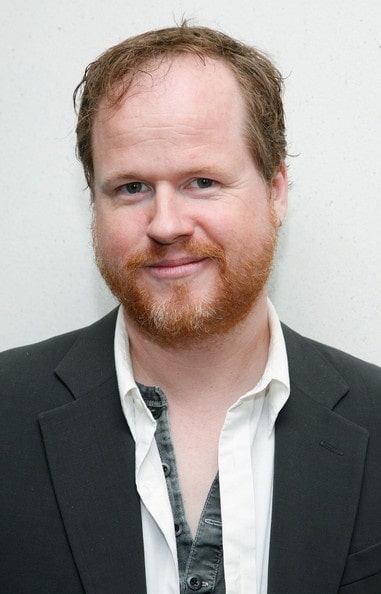
© Image credit
Early life
Born in New York City on June 23, 1964 as Joseph1 Hill Whedon, and being a third-generation TV writer, he is the son of Tom Whedon, a screenwriter for Alice in the 1970s and The Golden Girls in the 1980s, and the grandson of John Whedon, who worked on The Donna Reed Show in the 1950s and The Dick Van Dyke Show in the 1960s. His mother, Ann Lee (née Jeffries) Stearns, originally from Kentucky, was a teacher at Riverdale Country School as Lee Whedon, and an aspiring novelist. His parents had both acted, and appeared in a play together at the Harvard Radcliffe Dramatic Club. Whedon is the younger sibling of Samuel and Matthew Whedon and older sibling of writers Jed and Zack Whedon. At a young age, he showed great interest in British television with shows like Masterpiece and Monty Python. Whedon attended Riverdale Country School in New York City where his mother taught history. He then spent three years at Winchester College in England, where he took notice that “it was clear to me from the start that I must take an active role in my survival”. Whedon graduated from Wesleyan University in 1987, where he was awarded an honorary Doctor of Letters in 2013. There, he also studied under renowned academic Richard Slotkin. After leaving Wesleyan, Whedon came up with the first incarnation of Buffy Summers, “Rhonda, the Immortal Waitress”.
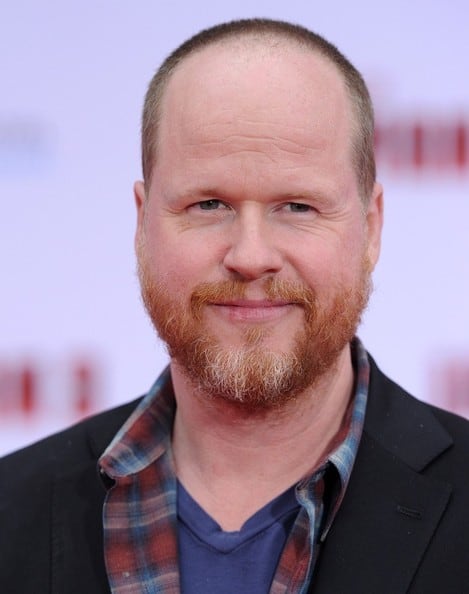
© Image credit
1980s-1990s
Early work
From 1989 to 1990, Whedon worked as a staff writer on the sitcoms Roseanne and Parenthood. As a script doctor, Whedon was an uncredited writer on films like The Getaway, Speed, Waterworld, Twister, X-Men and Atlantis: The Lost Empire. X-Men reportedly contained only two dialogue exchanges of Whedon’s contribution, but the final cut of Speed left in most of his dialogue. At the same time as script consulting, he wrote Buffy the Vampire Slayer–the film that would precede the series–and Alien: Resurrection, and co-wrote Toy Story and Titan A.E., the former of which earned him a shared Academy Award nomination for Best Original Screenplay. Whedon has expressed strong dissatisfaction with the released versions of the films Buffy the Vampire Slayer, Titan A.E. and Alien: Resurrection.
Buffy the Vampire Slayer
In 1997, Whedon created his first TV show, Buffy the Vampire Slayer.2 The series depicts Buffy Summers, the latest in a line of young women called to battle against vampires, demons, and other forces of darkness. The idea came directly from his aversion to seeing the Hollywood formula of “the little blonde girl who goes into a dark alley and gets killed in every horror movie”. Whedon said he wanted to subvert the idea and create someone who was a hero. This conception came from “the very first mission statement of the show, which was the joy of female power: having it, using it, sharing it”. The writing process came together from conversations about the emotional issues facing Buffy Summers, and how she would confront them in her battle against supernatural forces. Whedon usually directed episodes from his own scripts that held the most cathartic moments in Buffy’s story.
The series received numerous awards and nominations, including an Emmy Award nomination for the 1999 episode “Hush”. The 2001 episode “The Body” was nominated for a Nebula Award in 2002, and the fall 2001 musical episode “Once More, with Feeling” was nominated for a Best Dramatic Presentation Hugo Award and a Best Script Nebula Award. The final episode “Chosen” was nominated for a Best Dramatic Presentation, Short Form Hugo Award in 2003. All written and directed by Whedon, they are considered some the most effective and popular episodes of the series.
Buffy the Vampire Slayer was lauded worldwide for its influential themes and impact on popular culture. Since the end of the series, Whedon has stated that his initial intention was to produce a “cult” television series and acknowledged a corresponding “rabid, almost insane fan base” that subsequently emerged. In June 2012, Slate magazine identified it as the most written about popular culture text of all time. “[M]ore than twice as many papers, essays, and books have been devoted to the vampire drama than any of our other choices – so many that we stopped counting when we hit 200”.
A lifelong comic book fan, Whedon authored the Dark Horse Comics miniseries Fray, which takes place in the far future of the Buffyverse. Like many writers of the show, he contributed to the series’ comic book continuation, writing for the anthology Tales of the Slayers, and the main storyline of the miniseries Tales of the Vampires. Whedon and the other writers then released a new ongoing series, taking place after the series finale “Chosen”, which he officially recognizes as the canonical eighth season. Whedon returned to the world of Fray during the season eight story arc “Time of Your Life”. Arcs and issues of season eight written by Whedon include “The Long Way Home”, “The Chain”, “Anywhere but Here”, “A Beautiful Sunset”, “Time of Your Life”, “Turbulence” and “Last Gleaming”. Buffy the Vampire Slayer Season Nine was published from August 2011 to September 2013, for which Whedon wrote “Freefall, Part I-II” (with Andrew Chambliss).
Angel
As a result of Buffy the Vampire Slayer? ‘s success, Whedon was allowed the opportunity to make his 1999 spin-off series, Angel. David Greenwalt and Whedon collaborated on the pilot that was going to be developed for The WB Network. During the series’ early expansion, efforts were made by the network to mitigate Whedon’s original concept. “Corrupt”, a precociously optioned second episode, was entirely abandoned due to the gloominess written into the script. The tone was consequently softened, establishing in the opening episodes Angel Investigations as an idealistic, shoestring operation. It follows Angel, who works as a private detective in order to “help the helpless”.
Though praised for presenting a unique and progressive version of the archetypal noir hero as a sympathetic vampire detective, it was criticized as being lesser than its parent show, in context of having been derived from a more popular original work. Despite this, it won a Saturn Award for Best Network TV Series and the three episodes “Waiting in the Wings”, “Smile Time” and “Not Fade Away” were nominated for Hugo Awards for Best Dramatic Presentation, Short Form in 2003 and 2005.
The WB Network announced on February 13, 2004 that Angel would not be brought back for a sixth season. Whedon said of the cancellation, “It was like ‘Healthy Guy Falls Dead From Heart Attack.’ I believe the reason Angel had trouble on The WB was that it was the only show on the network that wasn’t trying to be Buffy. It was a show about grown-ups”. An official continuation of the story came rather in the form of a comic book series. Following Buffy the Vampire Slayer? ‘s successful eighth season, IDW Publishing approached Whedon about similarly producing a canonical sixth season for Angel. Angel: After the Fall released 17 issues written by Whedon and Brian Lynch.
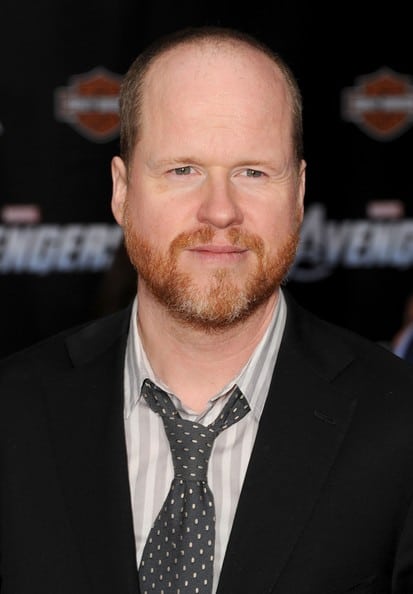
© Image credit
2000s
Firefly
Whedon followed Angel with the space western Firefly, starring Nathan Fillion, Gina Torres, Alan Tudyk, Morena Baccarin, Adam Baldwin, Jewel Staite, Sean Maher, Summer Glau and Ron Glass. Set in the year 2517, Firefly explores the lives of the people who, on the outskirts of society, make their living as the crew of Serenity, a “Firefly-class” spaceship. The series’ original concept progressed after Whedon read The Killer Angels, a book on the Battle of Gettysburg.
An ever present element was Whedon’s injection of anti-totalitarianism, writing into the show a historical analogy of the Battle of Gettysburg, the “Battle of Serenity Valley”.3 The beaten soldiers were called “Browncoats” after the brown dusters they wore as their uniforms. Whedon said, “I wanted to play with that classic notion of the frontier: not the people who made history, but the people history stepped on – the people for whom every act is the creation of civilization”. Firefly was written as a serious character study, encompassing what Whedon called “life when it’s hard”, and in elaboration was about “nine people looking into the blackness of space and seeing nine different things”.
The fusion of American frontier and outer space motifs was not well received by critics. And despite critical praise in other respects, the show had an average of 4.7 million viewers at the time and was ranked 98th in Nielsen ratings, which led to the series’ cancelation by Fox. Whedon took to Universal Pictures as a means of achieving a continuation of the story. Following Firefly was Serenity, a follow-up film taking place after the events of the final episode. This developed into a franchise that led to graphic novels, books and other media. New Scientist magazine held a poll in 2005 to find “The World’s Best Space Sci-Fi Ever”, in which Firefly and Serenity took first and second place, respectively. Since its cancellation, the series acquired cult status.
Marvel Comics
In 2004, Whedon created the comic book line Astonishing X-Men. He finished his 24 issue run in 2008 and then handed over the writing reins to Warren Ellis. One storyline from this comic, the notion of a cure for mutation being found, was also an element in the third X-Men film, X-Men: The Last Stand. In February 2009, Astonishing X-Men #6, which depicted the return of Colossus to the title, and concluded Whedon’s first story arc, was named by readers as #65 in Marvel’s Top 70 Comics of all time.
Taking over after series creator Brian K. Vaughan completed his run, Whedon became the second writer of the Marvel comic Runaways. Having already been a committed reader, he had a letter published in the first volume, which was included in the Volume 1 hardcover edition. He also wrote short pieces for Stan Lee Meets Spider-Man and Giant-Size Astonishing X-Men #1, and was the subject of an issue of Marvel Spotlight (alongside artist Michael Lark). As part of a panel of writers, he contributed to Marvel Comics’ Civil War crossover event, lending advice in how to tell the story and how to end it. Whedon introduced several new characters into the Marvel Universe such as the villainous Ord, X-Men Ruth “Blindfold” Aldine and Hisako “Armor” Ichiki, Runaway Klara Prast, and Special Agent Abigail Brand along with S.W.O.R.D., the organization she commands.
Serenity
After Universal Pictures acquired the film and distribution rights from Fox, Whedon started writing the screenplay for Serenity. Transforming the series into a film, he says, “…was the hardest piece of writing I’ve ever done … It had to be self-contained and work as a movie, which meant I had to cope with problems like introducing nine main characters who’d already met!” The script was based on unused story ideas for Firefly? ‘s unfilmed second season. On writing the dialogue, Whedon felt that part of it came from “getting to invent the language”, which “once I had … reads like a kind of poetry”. The narrative centers on Captain Malcolm Reynolds as “the hero” accompanied by River Tam acting as “the catalyst for what he does”. The R. Tam sessions focused on the latter character’s past, serving as a form of viral marketing for the film, starring himself and Summer Glau.
The score was composed by David Newman, and according to Whedon was intended to “deglorify space – to feel the intimacy of being on a ship as opposed to the grandeur”. He used two long steadicam shots for several minutes of the film’s opening sequence to establish “a sense of safety in space”. In 2006, it won a Hugo Award for Best Dramatic Presentation, Long Form. The elements of science fiction that Whedon wanted to convey were essentially different in kind, and held “a sort of grittiness” and “realism”, which he said, together, “get the most exciting kind of film-making”. Like Firefly, the film contained a statement on individual liberty. Critic Roger Ebert observed, “Like Brave New World and 1984, the movie plays like a critique of contemporary society, with the Alliance as Big Brother, enemy of discontent”. The film received the 2005 Nebula Award for Best Script, the 2006 Prometheus Special Award, and was voted the best sci-fi movie of all time in a poll set up by SFX magazine. There have since been multiple rumors regarding sequel possibilities.
The limited three-issue comic book series called Serenity: Those Left Behind, the story of which was written by Whedon, was released in 2005 as a tie-in to Serenity. Set between Firefly and the film, it was intended to bridge the two storylines together. Serenity: Better Days also spanned three issues, and was written by Whedon and Brett Matthews. Whedon later co-wrote The Shepherd’s Tale with his half brother Zack.
Freelance directing and Sugarshock!
As a guest director, he contributed two 2007 episodes of The Office (“Business School” and “Branch Wars”) and a 2010 episode of Glee (“Dream On”). Denoting this period, Whedon has said, “I had free time, but I’m pretty sure I mean my career was on the skids”.
In collaboration with Fábio Moon, Whedon created the free webcomic titled Sugarshock!, as part of the revival of Dark Horse Presents, which was launched on Myspace. Whedon later executive produced another free comic book on the Internet, Serenity: The Other Half.
Dr. Horrible’s Sing-Along Blog
As a response to the 2007-08 Writers Guild of America strike, Whedon directed, co-wrote and produced Dr. Horrible’s Sing-Along Blog. It tells the story of Dr. Horrible, an aspiring supervillain, who shares a love interest in a girl named Penny with his nemesis, Captain Hammer. To Whedon the miniseries was “always meant to be a project of love”, and an accomplishment “that’s gonna really make us excited, that’s gonna be our passion, and our ridiculousness”. His half brothers Zack and Jed and sister-in-law Maurissa Tancharoen share the other writing credits. Whedon said working with family members provided him with “a glorious surprise” once it became apparent “how much we were all in sync”.
After having attended meetings with companies discussing the prospect of producing something for the Internet, and faced with negative feedback on his ideas, “It became clear that nothing was going to happen with this company before the strike was over”. Whedon funded the project himself with the investment of just over $200,000, and earned more from it than he did directing The Avengers. He enjoyed the independence gained from it, saying there was “freedom to just let the dictates of the story say how long it’s gonna be. We didn’t have to cram everything in … we put in the amount of story that we wanted to and let the time work around that”. He and Jed composed the music, parts of which were influenced by Stephen Sondheim.
About its place in changing the approach for content on the web, he said, “The idea was, we’ll do it for fun, and if our fun for some reason causes other people to have fun, and they end up paying for that, then I will actually have the opportunity to create a different paradigm of payment and profit-sharing for writers and artists involved in the project”. “We all know that the mediums are shifting and that television is struggling to figure out how the rise of the computer is going to affect it”. Whedon was awarded Best Directing and Best Writing for a Comedy Web Series at the Streamy Awards, a Hugo Award for Best Dramatic Presentation, Short Form, and a Creative Arts Emmy Award in 2009.
Dollhouse
In 2009, Whedon created his fourth television series Dollhouse, and explored themes throughout the show that were initially present in an unproduced spec script of his called Afterlife. The series follows Echo, an “Active” programmed for various purposes, on her journey towards self-awareness. As stated by Whedon, Dollhouse was about “the sides of us that we don’t want people to see”, “the idea of sexuality” and, on some level, “a celebration of perversion” because “perversion, like obsession, is the thing that makes people passionate and interesting and worthy”.
Despite low ratings in its first season, the series was renewed for a second and final season. The reason for the renewal given by Fox’s president of entertainment was, “if we’d canceled Joss’s show I’d probably have 110 million e-mails this morning from the fans”. In reflection of Fox’s disruptive involvement, Whedon explained, “I had the idea of identity. I had the idea of moral culpability. But I lost one or two essential things. And that ultimately killed the show because we were dancing around them” and “when that fell out, when the show turned into a thriller every week, it took something out of it that was kind of basic to what we were trying to do”.
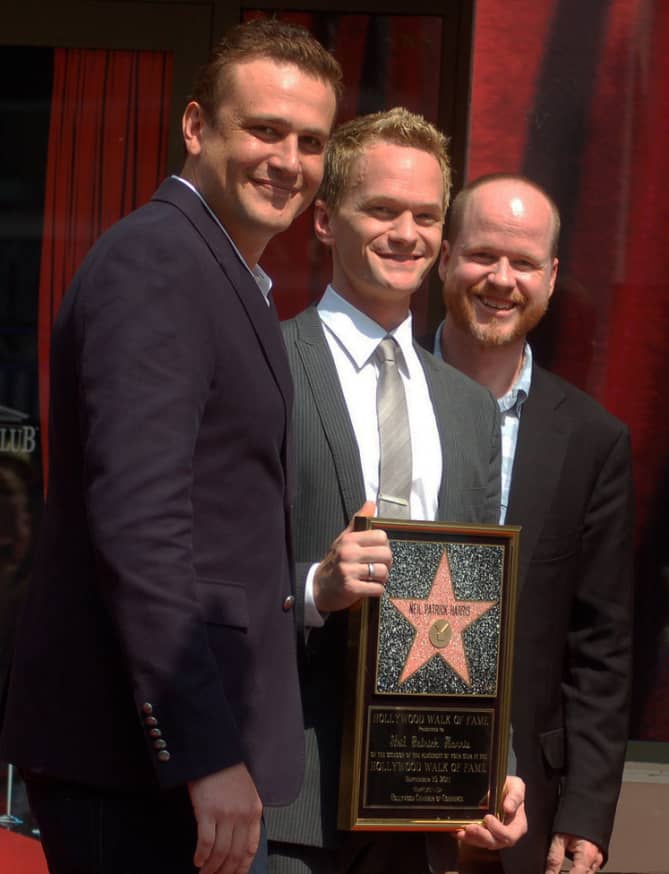
© Image credit
2010s
The Cabin in the Woods
Whedon co-wrote and produced a horror-comedy film titled The Cabin in the Woods with director Drew Goddard, which finished production in 2009. Whedon and Goddard both intended to make a film “that was about horror movies while being a straight-up, good fun and scary horror movie”. The script was written in three days, producing a minimum of 15 pages a day. Whedon described it as an attempt to revitalize horror, calling it a “loving hate letter” to the genre, continuing:
On another level it’s a serious critique of what we love and what we don’t about horror movies. I love being scared. I love that mixture of thrill, of horror, that objectification/identification thing of wanting definitely for the people to be alright but at the same time hoping they’ll go somewhere dark and face something awful. The things that I don’t like are kids acting like idiots, the devolution of the horror movie into torture porn and into a long series of sadistic comeuppances. Drew and I both felt that the pendulum had swung a little too far in that direction.
Part of what Whedon thought distinguished it from other horror films was that “people are not expendable. As a culture, for our own entertainment, we tend to assume that they are”. He stated that the idea started as “a logical extension of what I think about horror movies”, and reiterated his sentiment that the introduction of torture porn into this genre was “becoming this extremely nihilistic and misogynist exercise in just trying to upset you, as opposed to trying to scare you”.
Marvel Studios
- The Avengers
In July 2010, it was confirmed that Whedon would write and direct The Avengers, a live-action adaptation of the superhero team of the same name. On his desire to take on the film, he said, “It goes back to the very first incarnation of The Avengers, it goes to The Ultimates, it goes to everything about it. It makes no sense, it’s ridiculous … Ultimately these people don’t belong together and the whole movie is about finding yourself from community. And finding that you not only belong together but you need each other, very much. Obviously this will be expressed through punching but it will be the heart of the film”.
About the cinematography, DP Seamus McGarvey said that he and Whedon “were keen on having a very visceral and naturalistic quality to the image” and “wanted this to feel immersive and did not want a ‘comic book look’ that might distance an audience with the engagement of the film”. They used the digital camera Arri Alexa when shooting the film. Whedon commented on the conversion of The Avengers from 2D to 3D, saying that “current 3D conversion technology is really amazing, and Marvel is very picky. Having a sense for things in a 3D space and filming while feeling that space was a very easy thing for me. I’m just tired of seeing just things flying toward the camera. So I had to make things look good for 3D in 2D. My eyes and senses work that way, so the conversion from 2D was no problem”. The music, Whedon said, “is very old-fashioned, which is why Alan was letter-perfect for this movie because he can give you the heightened emotion, the Zimmer school of ‘I’m just feeling a lot right now!’ but he can also be extraordinarily cue and character specific, which I love”.
It became the third highest-grossing film of all time at the North American box office, and received considerable praise from critics. But in retrospect, Whedon thought the film had “imperfections”. “When I think of a great film, I think of something that’s either structured so perfectly like ? ‘ The Matrix? ‘ or made so lovingly like ? ‘The Godfather Part II.? ‘ … The thing I cared most about–making a summer movie like the ones from my childhood–is the thing that I pulled off”.
- Agents of S.H.I.E.L.D.
In March 2012, Whedon stated that although television involves more compromise than film:
I think, ultimately, gun to my head, TV is the place. Being able to spend years with a character, to really develop them, to understand them, to challenge the actor, to learn from the actor, to work with a team of writers – that experience is so fulfilling. The idea of putting something out there and letting it grow is really exciting.
In August 2012, Whedon signed a deal to develop the Marvel TV show Agents of S.H.I.E.L.D. for ABC. The series focuses on the secret military law-enforcement agency featured throughout the Marvel Cinematic Universe. Created by Whedon, Jed Whedon and Maurissa Tancharoen, he stated that while the show involves individuals who possess powers within the spectacle of science fiction, it also focuses on “the peripheral people … the people on the edges of the grand adventures”. In the same vein, Whedon described the lead character of Phil Coulson as “low-key, he’s never overselling, and then when he turns out to be the smartest person in the room, everybody else is like, ‘Oh…’ And you can’t buy that. You can’t train for it. Some people just have it”. The character’s resurrection for the series since his death in The Avengers was said to have begun with “the idea of the Little Guy”, which Whedon felt meant something he was “very fierce about”, saying “there has never been a better Little Guy than Clark Gregg. That intrigued me, this world around the superhero community … It’s the more intimate stories that belong on television that we can really tap into the visual style and ethos, and even some of the mythology, of the Marvel movies”.
Whedon spoke about complications that factored in with making the show for Marvel, saying, “They didn’t actually want me to make it. It’s like, ‘Uh, Joss, we really wanted you to do [Age of Ultron]. Instead you created a TV show, you moron.’ ‘I thought you wanted me to!’ ‘No, we just wanted you to make a movie.’ ‘Oh. My bad.’ … It went from being absolutely 100% the driving force and totally hands-on to ‘That sounds great, Jed! You should do that!'” He ultimately regretted his decision to bring back Phil Coulson, feeling that his death had lost meaning as a result.
- Avengers: Age of Ultron
Whedon returned to write and direct a sequel to The Avengers, following the deal with Marvel Studios, which expired in June 2015. On the matter of approaching a sequel, Whedon reasoned not to go “bigger”, but “deeper”. “Now you can really spend your time just digging in. And by digging in, I mean with a scalpel to cause pain”. He said of the film’s characters, “Strong but damaged by power describes every person in this movie. It may, in fact, describe what the movie is about. You know, the more power that we have, the less human we are”–“Ultron’s pain is very, very real to me. He can’t control the way his pain makes him behave. And I can relate to that”. Whedon discerns that Age of Ultron “is an odd film in some ways. We went to some strange places in this one, and making that work and making it flow and making it all feel like it’s part of the same movie was difficult”. “Ultimately, finding the rhythm of the thing was the real challenge … ‘When does it need to calm down? When does it need to build up? When do we need to remind people what’s going on with this guy?’ I liken it to a symphony. It can’t all be RAAAAAAH, like John Philip Sousa. You want something that has grace in the middle of ultimate chaos”.
Whedon also served as a creative consultant on the films in the Marvel Cinematic Universe leading up to Age of Ultron. He rewrote some dialogue for Thor: The Dark World, directed the mid-credits scene of Captain America: The Winter Soldier, and suggested that James Gunn make Guardians of the Galaxy “weirder” after reading an early draft. Whedon said it was unlikely that he would return to make another sequel, stating that he “couldn’t imagine doing this again”. “This was the hardest work I’ve ever done, and at some point, when it’s that hard, you just feel like you’ve lost”. He continued, “I haven’t created my own universe for over five years. That feels wrong”. Intent on using the proceeds made from Avengers: Age of Ultron for such ventures, Whedon explains his plans for the future, “One person. Can’t stress that enough. Movie about one person — not a team, not 10, just one”.
Much Ado About Nothing
To create Much Ado About Nothing, Whedon established Bellwether Pictures. On October 23, 2011, he confirmed they had completed principal photography. The film was scripted, produced, directed, edited and composed by Whedon, based on William Shakespeare’s play of the same name. Whedon’s idea to adapt the play for the screen originated from having “Shakespeare readings” at his house with several of his friends, years prior.
He filmed it in black-and-white on digital video over a period of 12 days at his residence in Santa Monica, California. Whedon and his DP Jay Hunter took advantage of natural lighting in order to make it feel “very found”, noting, “Our lighting package rose in the east and set in the west”. Using mirrors, glass and windows to shoot through, he explains, “[It’s] something I’d like to do all the time, but particularly in a movie that’s all about lies, and manipulation and misunderstandings. The more you can warp the frame a little bit, the more it speaks towards what’s going on”.
Despite the play’s comedy, he discovered that there were elements in the text “of debauchery” that brought out a core darkness, and said the visual nature of film influenced him to permeate a motif of sexuality into the script. Working with the actors, Whedon determined that, although giving them notes for guidance, “…what I understand is what an actor wants to know. ‘Why am I doing this, and how should it come out?’ And ‘Will I be safe to try something strange?’ And ‘Will I be asked to do more?’ I don’t come at it from any other standpoint than that”.
In Your Eyes and EP collaboration
Whedon wrote and executive produced the paranormal romance film In Your Eyes, the second feature by Bellwether Pictures. The film tells the story of Rebecca Porter and Dylan Kershaw who can feel each other’s emotions, but are ultimately strangers. Whedon’s script marked a theme of human connection as the metaphor for the couple’s mysterious link. He conceived the idea in the early 1990s, and had written drafts of the screenplay since then.
In summer 2014, Whedon encountered artist Shawnee Kilgore on Kickstarter. He said of her project, “I really loved the music and the sound of her voice”. Whedon funded her album shortly after. When Kilgore contacted him about his fulfillment reward, he suggested they make a song together. She agreed, and received lyrics to one called “Big Giant Me”. To Whedon, the song epitomized “the idea of change, and how much someone will accept you for yourself and what you are and what you’re going to become”. The collaboration was then repurposed into producing an extended play. Whedon’s work on Avengers: Age of Ultron required the progress on the EP to be held back.
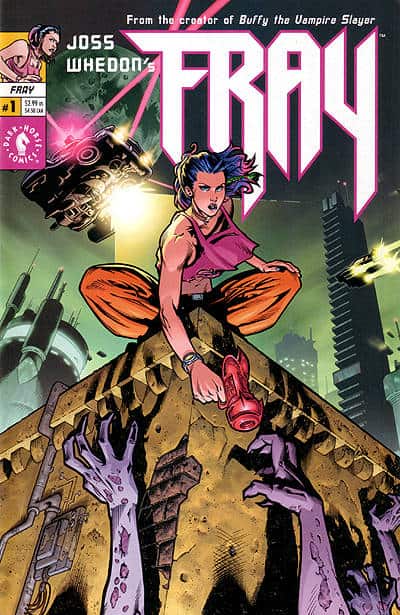
© Image credit
Unrealized projects
Early in his career, Whedon sold two spec scripts that weren’t produced, Suspension and Afterlife. He sold Suspension for $750,000, with an additional $250,000 if production had commenced. In September 2014, Empire suggested the script4 was being made, with Liam Neeson attached to the project. In 1994, he sold Afterlife for $1.5 million, with an additional $500,000 if production had commenced. In 2000, Andy Tennant was in talks to direct and rewrite. In Afterlife there were precursors to themes Whedon would later explore in Dollhouse. The script was about Daniel Hoffstetter, a government scientist, who awakes after dying to discover his mind has been imprinted on a mind-wiped body.
Whedon had a number of planned Buffy the Vampire Slayer spinoffs that became stuck in development or terminally stalled. Among these were Buffy the Animated Series, a set of television movies for The WB based on Angel and Buffy characters, and Ripper, a proposed BBC pilot about Rupert Giles.
Goners was announced in 2005. According to Variety magazine, it was a fantasy thriller under development by Universal Pictures, and was to be produced by Mary Parent and Scott Stuber. When asked about the film itself during an interview, Whedon said, “It is pretty dark and it’s all me. So people will pretty much know what that means if they look at my body of work. But it’s a new universe set in the present day with a new concept for me and a new bunch of characters. It’s been a long time since I got to do that, so that’s really fun”. From a 2006 interview with Fanboy Radio: “I’ve been seeing a lot of horror movies that are torture-porn, where kids we don’t care about are mutilated for hours, and I just cannot abide them… it’s an antidote to that very kind of film, the horror movie with the expendable human beings in it. Because I don’t believe any human beings are”. In the wake of having finished Avengers: Age of Ultron, Whedon noted that despite there being “something about [ Goners] that hasn’t been expressed yet”, he would not have the energy to make anything that involved a team.
Whedon was hired to write and direct a Warner Bros. adaptation of Wonder Woman. However, in February 2007, Whedon announced that he would no longer be involved with the project. “We just saw different movies, and at the price range this kind of movie hangs in, that’s never gonna work. Non-sympatico. It happens all the time”. Conversely, he stated, “the fact of the matter is, it was a waste of my time. We never [wanted] to make the same movie; none of us knew that”. Whedon also pitched a screenplay to adapt Batman for the same company as development started on what would eventually become Batman Begins. It was described as having included a new, “more of a ‘Hannibal Lector’ type” villain, and portrayed Bruce Wayne as “a morbid, death-obsessed kid” whose grief was overcome by protecting a girl from being bullied in an alley similar to where his parents were murdered. Whedon recalled, “Bruce is like, “I stopped them. I can stop them.’ That was the moment for me. When he goes ‘Oh, wait a minute; I can actually do something about this.’ The moment he gets that purpose”.
The sequel to Dr. Horrible’s Sing-Along Blog has been shelved on multiple occasions. In 2009, Whedon remarked upon the possibility of presenting it in the form of another miniseries or a feature film. He said in an interview with The New York Times, “We’ve got several songs near completion and we’ve got a very specific structure”. The script was planned to be written in summer 2012 and the principal photography to take place the following year. However, production was delayed because of his commitment to projects at Marvel Studios. In 2015, Whedon was unsure whether the sequel was possible. “Everybody’s so busy, and we’ve all changed … But god knows, we have the people. We have the technology. We can rebuild it”.
Wastelanders, a web-based “end-of-the-world” project, once in development with author Warren Ellis, was postponed due to Whedon’s preoccupation with The Avengers. Calling it “a dark piece”, he proceeds: “I’m just like, ‘Gosh, well, if I’m going to finance this and put it together, it’s kind of dangerous.’ It’s not going to have a soundtrack album, it’s not going to have all these revenue streams. It’s going to be something that I put out there because I feel like I have to, and I don’t have to rely on anybody else to let me”. Whedon stated in 2015, “I still talk to Warren about it. I still think it’s interesting. It was built around a sort of internet paradigm that probably is a little old-fashioned … So I sort of need to look at the landscape”.
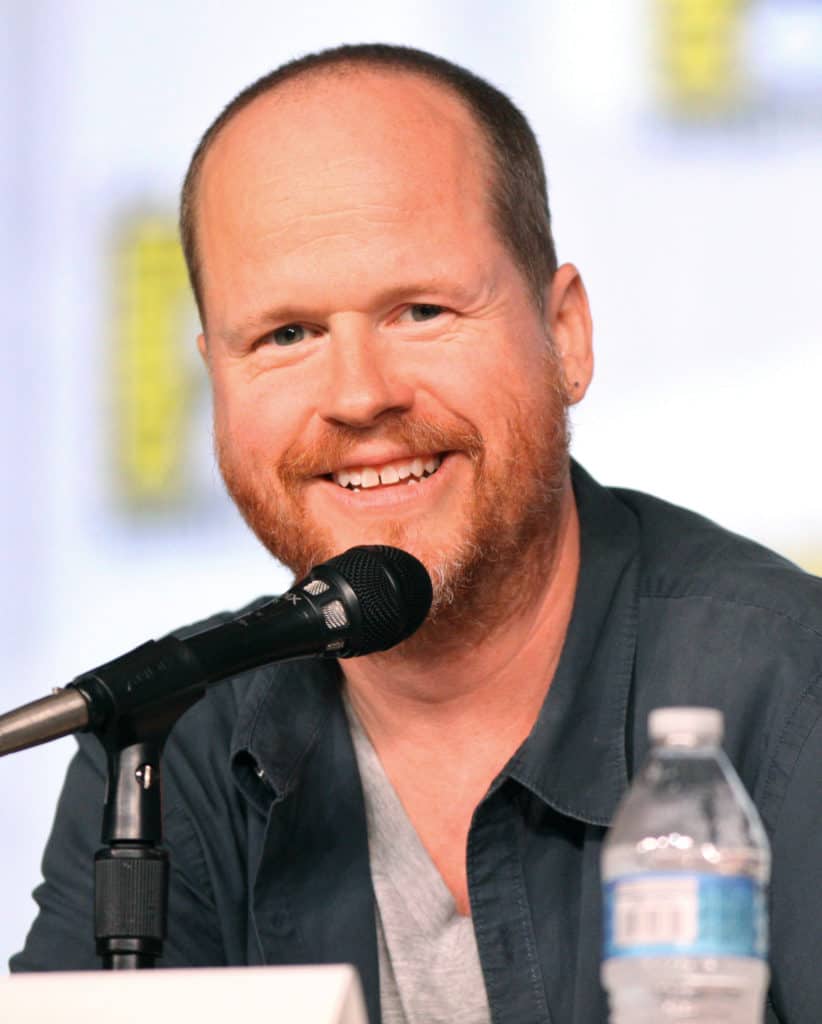
© Image credit
Themes, style and influences
Thematically, Whedon’s works feature allusions to components in existentialism, anti-authoritarianism, power, powerlessness, sexuality, adulthood, sacrifice, misogyny and feminism. His projects usually revolve around an ensemble of protagonists, primarily focused on a loner hero who ends up working with others to accomplish a goal. He says of the recurring aspects of community, “Everything I write tends to turn into a superhero team, even if I didn’t mean for it to. I always start off wanting to be solitary, because a) it’s simpler, and b) that isolation is something that I relate to as a storyteller. And then no matter what, I always end up with a team”. Examining a typical motif, he says, “I tend to write about people who are helpless or out of control who then regain or retake control”.
Speaking about his approach to screenwriting, Whedon has noted outlining and act structure as the hardest parts of storytelling, but emphasizes that he feels they are “completely essential”. He elaborates, “With The Avengers, the structure nearly killed me. It was very difficult to make it flow and cohere in terms of all the changing perspectives and characters, all these movie stars, all these beats to hit. It’s a ridiculously complex puzzle. But once you’ve got the puzzle, and you’re just filling in the voices and coming up with the moments, that’s what’s fun”. Many of Whedon’s altered phrases and heavily popularized words have entered a common usage called “Slayer Slang”, which PBS included an entire section of in their article series Do You Speak American?. In an issue of Buffy the Vampire Slayer Season Eight, where Buffy travels to the future, Whedon writes Buffy’s reaction to the future dialect of Manhattan; this allows Whedon to comment on the series’ distinctive style of dialogue. “Buffy blames herself for what’s happened to the English language, and there’s a lot of hubris in that joke. I like to think that adding Y’s to words that don’t usually have Y’s is going to destroy the whole fabric of our society”. His use of self-aware dialogue to humanize characters, which relies heavily on dry humor and subtext, treating clichés subversively, using misogyny to define the trait of a villain, and the recurring theme of self-sacrifice led by subverting moral icons have been defining to his style of storytelling.
His penchant to kill off characters has been widely criticized. Whedon has admitted extreme tiredness to the criticism, explaining, “The percentage of people who die… is a lot. I think it’s pretty near everybody. The percentage of people that I kill – not so many. I think the reason that my rep is so nasty is that I tend to do it… unexpectedly, or to someone people are recently invested in, and that is a real mission statement for me, because, death doesn’t leave a card. Death doesn’t take Hitler. It doesn’t work according to story plans. And when a death feels like a loss, gives you grief… then you have told a story that involves death”. Dramatic effect is used to convey the sense of realism and shock value that comes from fatal circumstances.
Whedon has kept ambivalent on whether to shoot on film or digital video, saying that he has “no allegiance to film as film. If the story is in front of me, I’m fine”. In terms of visual aesthetics, he prefers to incorporate as many practical effects as possible when using computer-generated imagery. “I don’t think it looks good if it doesn’t look real. That veracity is the most important thing. You want to feel like this is definitely happening. I am very strict about letting people feel the space that something’s happening in, and the environment has got to be a key part of it. Generally you just try to mix just as much practical with CGI as possible, so people really don’t know where one begins and the other ends”. On working with high or low budgets, he remarked that both offer “the exact same job. The money has never mattered. If you have $100 million, if you have $100,000, you’re trying to hit someone in the gut with an emotional moment. If you can back that up with an awesome visual, that’s really neat. If you can back that up with a visual that’s not awesome, but at least gets it done, tells them what they need to know to hit them in the gut emotionally, that’s neat too. If the characters can only talk about it in a room, then the emotional moment has to be really, really good, but it’s still neat”.
Whedon has cited Ray Bradbury, James Cameron, Rod Serling, William Shakespeare, Stephen Sondheim, Steven Spielberg, Charles Dickens, Stan Lee, Robert Klein, Jerome Robbins, Frank Borzage, Steve Gerber, Steven Bochco, Frances Hodgson Burnett and John Williams as influences. When asked about his five favorite films, Whedon listed The Matrix, Once Upon a Time in the West, The Bad and the Beautiful, Magnolia and The Court Jester.
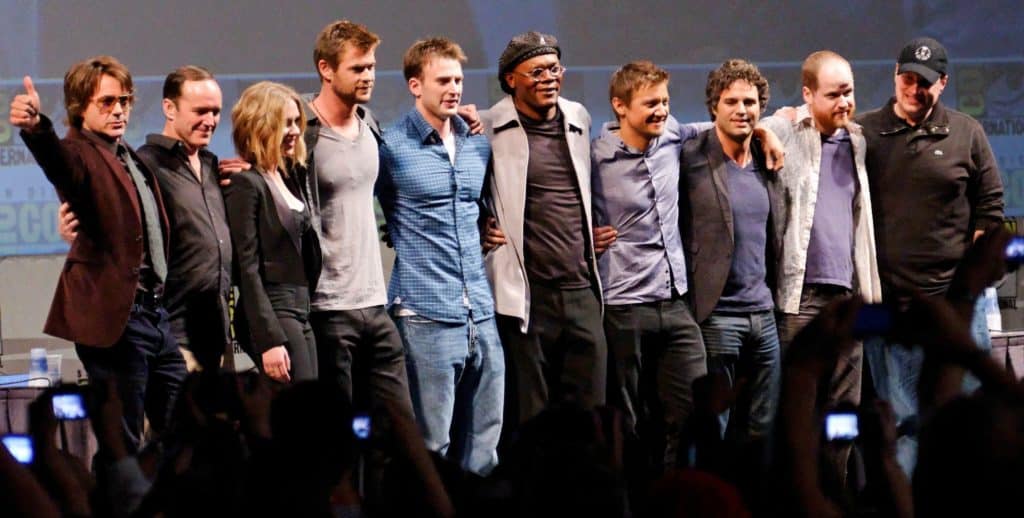
© Image credit
Feminism and activism
Elements of feminism are present throughout all of Whedon’s work, which he gives his mother credit for inspiring. When asked how he could write so well for women, he answered “If you met my mom, you wouldn’t ask”. The character Kitty Pryde from the X-Men comics was an early model for Whedon’s strong teenage girl characters. He said, “If there’s a bigger influence on Buffy than Kitty, I don’t know what it was. She was an adolescent girl finding out she has great power and dealing with it”. Kitty Pryde later played a central role in Whedon’s run on Astonishing X-Men. In response to perennially being asked why he writes such strong female characters, he famously replied, “Because you’re still asking me that question”.
In college, Whedon studied the theory called “womb envy”, a concept he says observes “a fundamental thing that women have something men don’t, the obvious being an ability to bear children, and the resilience to hang in as parents. I don’t understand why or how anyone ever pulled off the whole idea of ‘women are inferior’. Men not only don’t get what’s important about what women are capable of, but in fact they fear it, and envy it, and want to throw stones at it, because it’s the thing they can’t have”. In 2007, Whedon expressed his outrage over the murder of Du’a Khalil Aswad, and because the act was caught on video, was prompted to attack the underlying attitude he felt led to the murder, comparing the video to torture porn. He wrote, “[Womb envy is] entirely true. How else to explain the fact that cultures who would die to eradicate each other have always agreed on one issue? That every popular religion puts restrictions on women’s behavior that are practically untenable? That the act of being a free, attractive, self-assertive woman is punishable by torture and death?”
In late 2013, Whedon spoke at an Equality Now event, where he issued a pointed dissection of the word “feminist”. He begins to say, “I have the privilege living my life inside of words … but part of being a writer is also living in the very smallest part of every word”. Arguing against the suffix “-ist”, he continues, “you can’t be born an -ist. It’s not natural”. Whedon explains that because of this, the word “includes the idea that believing men and women to be equal … is not a natural state. That we don’t emerge assuming that everybody in the human race is a human. That the idea of equality is just an idea that’s imposed on us…” This sparked an unfavorable reaction from the feminist community, but also an appreciation for Whedon’s arguments’ thought provocation.
News website Digital Spy released in early 2015 an interview they had conducted with Whedon, during which he criticized the entertainment industry for its “genuine, recalcitrant, intractable sexism, and old-fashioned quiet misogyny”. He added, “You hear, ‘Oh, [female superheroes] don’t work because of these two bad ones that were made eight years ago,’ there’s always an excuse”. Whedon exemplified The Hunger Games film series as an argument for the female led franchise, and hoped Marvel Studios would be a part of undertaking the same bearing. He admitted however that “most of the best [female characters] in Marvel are owned by Fox”; referring to the X-Men film rights. After his comments went viral, Whedon responded: “It’s a struggle. You’ll always be able to rattle off the names of the female-driven genre films, and the rest are all male, and generally white men. I think the success of the young-adult trilogies that are usually not only female-driven but have a romantic bent–and are not necessarily about the spectacle of action but contain it–is great… We can evolve that genre more quickly if we come at it from different ways”.
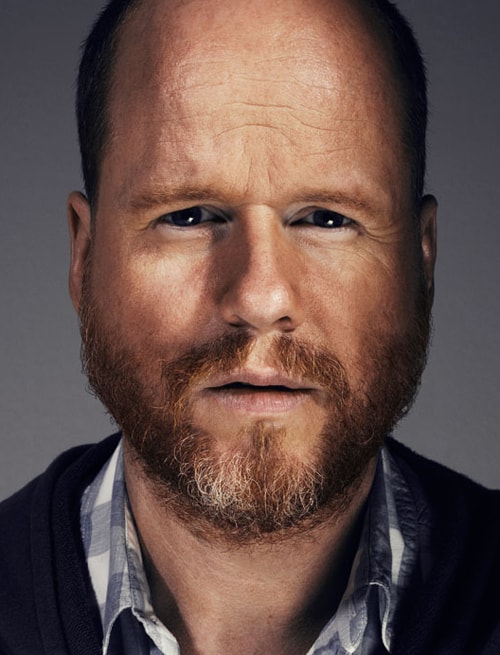
© Image credit
Frequent casting
Whedon often hires the same actors for his projects, and has been described as “the gravitational center of the Whedonverse, a galaxy that spins recurring actors and themes through an orbital system of TV shows, films and comic books that all share similar traits: a unique brand of witty dialogue, relatable characters and fantasy/sci-fi mythology”.
Note: Due to the frequency Whedon casts the same actors in various projects, the above list only includes those that have played three or more different roles in a Whedon production (actors that have only played the same role in multiple Whedon productions are not included).
Personal life
Whedon is married to Kai Cole, who is an architect, and the producer and co-founder of Bellwether Pictures. They have two children, Arden and Squire, and live in Los Angeles.
In 2013, Whedon revealed that he suffers from workaholism. This arose during the time that followed the completion of Much Ado About Nothing, which was made in the span of a two-week vacation from The Avengers, and after making the pilot for Agents of S.H.I.E.L.D. amidst the pre-production for Avengers: Age of Ultron. “It is actually a problem. Sometimes it’s adorable … and sometimes it’s not … Not to get all dark and weird, but it is something I need to address”.

© Image credit
Religious and philosophical views
Whedon has identified himself as an atheist and absurdist. In a piece by The Onion, he elaborated on the issue.
- The Onion: Is there a God?
- Whedon: No.
- The Onion: That’s it, end of story, no?
- Whedon: Absolutely not. That’s a very important and necessary thing to learn.
A committed humanist, Whedon was presented with the Outstanding Lifetime Achievement Award in Cultural Humanism by the Humanist Chaplaincy at Harvard University. He has also spoken about existentialism, explaining in detail how it, and more specifically Jean-Paul Sartre’s Nausea, was used as a basis for the Firefly episode “Objects in Space”. He called it “the most important book” he ever read, and said it was handed to him right after he saw Steven Spielberg’s Close Encounters of the Third Kind, whose impact, he recalls, had made him an existentialist.
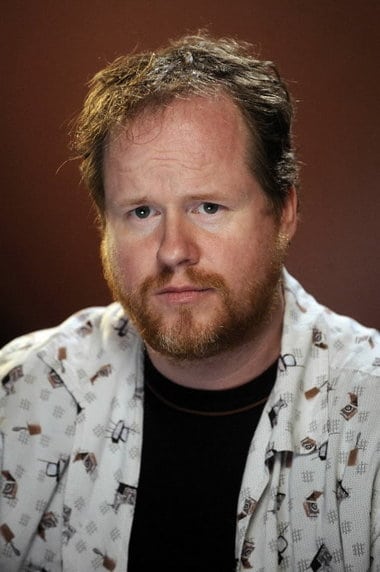
© Image credit
Political views
In July 2012, at the San Diego Comic-Con International, in response to one woman who noted the anti-corporate themes in many of his films, and asked him to give his economic philosophy in 30 seconds or less, Whedon spoke out against both the socialism he was brought up listening to and capitalism as well, stating that “ultimately all these systems don’t work”. He went on to say that America is “turning into Tsarist Russia”. Endorsing Barack Obama in the 2012 United States presidential election, Whedon satirically equated Mitt Romney’s future as president with a zombie apocalypse, “Romney is ready to make the deep rollbacks in health care, education, social services and reproductive rights that will guarantee poverty, unemployment, overpopulation, disease, rioting–all crucial elements in creating a nightmare zombie wasteland”.
In 2015, Whedon signed a petition as part of a political campaign calling for Elizabeth Warren to run for President of the United States. In observance of Earth Day, he spoke against climate change denial in a series of tweets, arguing, “The climate IS changing — if we can’t, that makes us dumber than weather … Policy makers who deny basic scientific truth should also be denied penicillin, horseless carriages, [and] air time on the magic box of shadows”.

© Image credit
Further reading
- Havens, Candace (2003) Joss Whedon: The genius behind Buffy, BenBella Books, ISBN 1-932100-00-8
- Davidson, Joy and Wilson, Leah–editors (2007) The psychology of Joss Whedon : an unauthorized exploration of Buffy, Angel, and Firefly, BenBella Books, ISBN 1-933771-25-9
- Koontz, K. Dale (2008) Faith and choice in the works of Joss Whedon, McFarland, ISBN 978-0-7864-3476-3
- Comeford, AmiJo and Burnett, Tamy (2010) The Literary Angel: Essays on influences and traditions reflected in the Joss Whedon series, McFarland, ISBN 978-0-7864-4661-2
- Waggoner, Erin B. (2010) Sexual Rhetoric in the Works of Joss Whedon: New essays, McFarland, ISBN 978-0-7864-4750-3
- Espenson, Jane and Wilson, Leah–editors (2010) Inside Joss’ Dollhouse: completely unauthorized, from Alpha to Rossum, Smart Pop, ISBN 978-1935251989
- Leonard, Kendra Preston–editor (2010) Buffy, Ballads, and Bad Guys Who Sing: Music in the Worlds of Joss Whedon, Scarecrow Press, ISBN 978-0-8108-6945-5
- Pascale, Amy (2014) Joss Whedon: The Biography, Chicago Review Press, ISBN 978-1613741047
